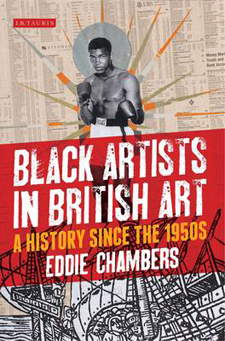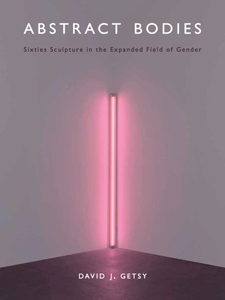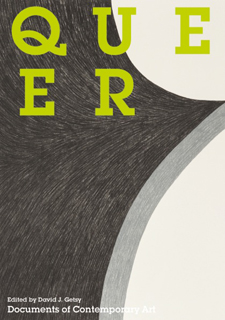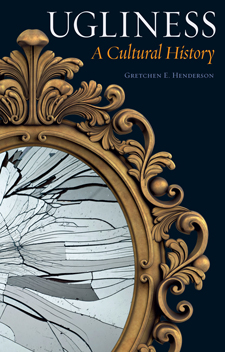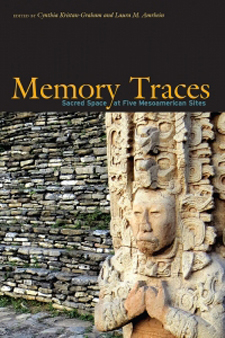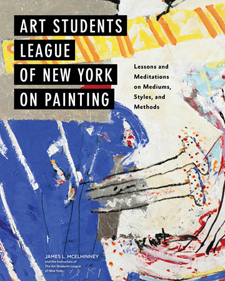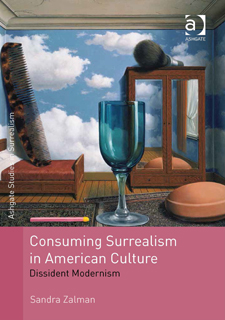CAA News Today
Grants, Awards, and Honors
posted by CAA — February 15, 2016
CAA recognizes its members for their professional achievements, be it a grant, fellowship, residency, book prize, honorary degree, or related award.
Grants, Awards, and Honors is published every two months: in February, April, June, August, October, and December. To learn more about submitting a listing, please follow the instructions on the main Member News page.
February 2016
Jay A. Clarke, Manton Curator of Prints, Drawings, and Photographs at the Sterling and Francine Clark Art Institute in Williamstown, Massachusetts, has been named a 2016 curatorial fellow by the Center for Curatorial Leadership.
Lily Cox-Richard, an artist based in Houston, Texas, has received a 2015 Houston Artadia Award, which comes with an unrestricted grant of $12,000.
Claire Daigle, associate professor and chair of the MA program in the history and theory of contemporary art at the San Francisco Art Institute in California, has won a 2015 award from the Arts Writers Grant Program, administered by Creative Capital and the Andy Warhol Foundation for the Visual Arts, for her blog, Figuring Fiction.
Susan Fisher, executive director and chief curator at the Renee and Chaim Gross Foundation in New York, has been chosen by the Center for Curatorial Leadership to join its 2016 class of curatorial fellows.
Johanna Gosse, Mellon Postdoctoral Fellow and Lecturer in the Department of Art History and Archaeology at Columbia University in New York, has accepted a 2015 award from the Arts Writers Grant Program, overseen by Creative Capital and the Andy Warhol Foundation for the Visual Arts. She will work on her book, On Site: Ray Johnson’s New York.
Valerie Hillings, curator and manager of curatorial affairs for the Solomon R. Guggenheim Foundation’s Abu Dhabi Project in the United Arab Emirates, has been selected as a 2016 curatorial fellow by the Center for Curatorial Leadership.
Elise Kirk, an artist based in Brooklyn, New York, has accepted a Working Artist Photography Award. Kirk was selected for the month of September 2015.
Courtney Martin, assistant professor in the Department of the History of Art and Architecture at Brown University in Providence, Rhode Island, has won a 2015 award from the Arts Writers Grant Program, steered by Creative Capital and the Andy Warhol Foundation for the Visual Arts. She will work on her book, A Critical Language: Lawrence Alloway’s Words to the Art World.
Theresa Papanikolas, curator of European and American art at the Honolulu Museum of Art in Hawai‘i, has been named a 2016 curatorial fellow by the Center for Curatorial Leadership.
Melissa Ragain, assistant professor of art history at Montana State University in Bozeman, has received a 2015 award from the Arts Writers Grant Program, administered by Creative Capital and the Andy Warhol Foundation for the Visual Arts. She will use the funds to work on her article, “Environmental Aesthetics in the Postwar University.”
Daniel Schulman, director of visual art for the Chicago Department of Cultural Affairs and Special Events in Illinois, has been chosen to be a 2016 curatorial fellow by the Center for Curatorial Leadership.
Martha Schwendener, an art critic for the New York Times and a PhD candidate in art history at the Graduate Center, City University of New York, has received a 2015 award in short-form writing from the Arts Writers Grant Program, administered by Creative Capital and the Andy Warhol Foundation for the Visual Arts.
Deborah Stratman, an artist and filmmaker based in Chicago, Illinois, has been named a USA Collins Fellow for 2015 in the media category by United States Artists. The award comes with an unrestricted grant of $50,000.
Deborah Willis, a photographer, curator, author, historian, and chair of the Department of Photography and Imaging at New York University’s Tisch School of the Arts, has received an honorary degree from the Institute for Doctoral Studies in the Visual Arts.
Exhibitions Curated by CAA Members
posted by CAA — February 15, 2016
Check out details on recent shows organized by CAA members who are also curators.
Exhibitions Curated by CAA Members is published every two months: in February, April, June, August, October, and December. To learn more about submitting a listing, please follow the instructions on the main Member News page.
February 2016
Juan Vicente Aliaga. Paz Errazuriz. Fondación Mapfre, Madrid, Spain, December 16, 2015–February 28, 2016.
William L. Coleman. Abodes of Plenty: American Art of the Inhabited Landscape. Mildred Lane Kemper Art Museum, Washington University in Saint Louis, Saint Louis, Missouri, January 29–April 16, 2016.
Reni Gower. Papercuts. The Gallery at Virginia Commonwealth University in Qatar, Doha, Qatar, September 16–November 24, 2015.
Reni Gower and Melissa Potter. Pulped under Pressure. Visual Arts Center, Tidewater Community College, Portsmouth, Virginia, January 16–March 3, 2016.
Alexandra Keiser. Archipenko: A Modern Legacy. Cummer Museum of Art and Gardens, Jacksonville, Florida, January 29–April 17, 2016.
Mattie M. Schloetzer. Washington Wax Works. Arts Club of Washington, Washington, DC, February 5–27, 2016.
Books Published by CAA Members
posted by CAA — February 15, 2016
Publishing a book is a major milestone for artists and scholars—browse a list of recent titles below.
Books Published by CAA Members appears every two months: in February, April, June, August, October, and December. To learn more about submitting a listing, please follow the instructions on the main Member News page.
February 2016
Eddie Chambers. Black Artists in British Art: A History since the 1950s (London: I. B. Tauris, 2014).
David J. Getsy. Abstract Bodies: Sixties Sculpture in the Expanded Field of Gender (New Haven: Yale University Press, 2015).
David J. Getsy, ed. Queer (Cambridge, MA: MIT Press, 2016).
Gretchen E. Henderson. Ugliness: A Cultural History (London: Reaktion, 2015).
Margaret Herke and John Herke. Students’ Guide to Italian Renaissance Architecture (Denton, NC: High Rock Interactive, 2015).
Cynthia Kristan-Graham and Laura M. Amrhein, eds. Memory Traces: Analyzing Sacred Space at Five Mesoamerican Sites (Boulder: University Press of Colorado, 2015).
James McElhinny. Art Students League of New York on Painting: Lessons and Meditations on Mediums, Styles, and Methods (New York: Watson-Guptill, 2015).
Sandra Zalman. Consuming Surrealism in American Culture: Dissident Modernism (Burlington, VT: Ashgate, 2015).
Two New Affiliated Societies
posted by CAA — February 11, 2016
At its February 2016 meeting, the CAA Board of Directors approved applications from two organizations to become Affiliated Societies. CAA welcomes the two new organizations into the group of over 80 Affiliated Society members.
Design History Society
The Design History Society is the leading organization that promotes the study of global design histories, and brings together and supports all those engaged in the subject: students, researchers, educators, designers, designer-makers, critics and curators. The society aims to play an important role in shaping an inclusive design history.
Feminist Art Project
The Feminist Art Project is an international collaborative network of educators, artists, curators, and other arts professionals advancing the aesthetic, intellectual, and political impact of women on the visual arts, art history, and art practice, past and present. The project presents, documents, and promotes diverse feminist art activities, scholarship, education, and publications through its website, online calendar, and scheduled events; it also facilitates networking and regional program development throughout the world.
To learn more about applying to become an Affiliated Society member, visit the information page on the CAA website.
Committee on Women in the Arts Picks for February 2016
posted by CAA — February 10, 2016
Each month, CAA’s Committee on Women in the Arts selects the best in feminist art and scholarship. The following exhibitions and events should not be missed. Check the archive of CWA Picks at the bottom of the page, as several museum and gallery shows listed in previous months may still be on view or touring.
February 2016
Lisa Yuskavage: The Brood
Contemporary Art Museum St. Louis
3750 Washington Boulevard, St. Louis, Missouri
January 15–April 3, 2016
The Contemporary Art Museum St. Louis presents Lisa Yuskavage: The Brood, her first solo museum exhibition in the United States in fifteen years. The show charts the artist’s career development through twenty-five years of her painting. On view are her surreal, otherworldly figures arranged in diptychs, triptychs, and what Yuskavage calls “symbiotic portraits.”
“Merging the grand tradition of portraiture with the expansive vocabulary of female transgression and empowerment, Yuskavage’s sensuous palette and confrontational subject matter provoke the imagination and create a sometimes polarizing space: the artist presents the female body as a site of defiance and decadence.”
The sometimes doll-like figures of Yuskavage’s paintings give way to sexualized poses and hint unsettling realities beneath the exquisitely painted canvases. As Christian Viveros-Fauné says in a review of the exhibition, previously at the Rose Art Museum (published by ARTnews on September 11, 2015), “The result is a bawdy brood of shocking figures painted with classical luminosity. Despite Yuskavage’s formal delicacy and love of bright colors, it’s no stretch to say that the best of her works are as dark as Francisco Goya’s Black Paintings.”
The exhibition is accompanied by a large-scale, comprehensive publication by Skira Rizzoli, created in close collaboration with the artist.
Betye Saar: Still Tickin’
Scottsdale Museum of Contemporary Art
7374 East Second Street, Scottsdale, AZ
January 30–May 1, 2016
The Los Angeles artist Beyte Saar’s new exhibition Still Tickin’ at the Scottsdale Museum of Contemporary Art presents nearly six decades of her work exploring African American identity, spirituality, and the interconnectedness between different cultures. The exhibition is divided into three themes: nostalgia and memory; mysticism and ritual; the political and racial.
From collage to sculpture to works on paper, Saar has used her artistic career to explore the lives of black people. In video interview for the 2011 Lifetime Achievement Award from the California African American Museum, she asks “What can I do as an artist to liberate Aunt Jemima?” after encountering the racially charged figure at a flea market. “I can make her a warrior,” she answers, giving Aunt Jemima a shotgun in the seminal piece, The Liberation of Aunt Jemima (1972).
Saar began her career in the Black Arts Movement of the 1960s, using found objects such as clocks, dolls, and cages among other bits and pieces, creating assemblages and installations. The Scottsdale exhibition brings together recent work and historical pieces.
Though Saar was featured in eight Pacific Standard Time exhibitions in 2010 and received the 2012 Los Angeles Museum of Contemporary Arts Distinguished Feminist Award, she remains largely overlooked. Still Tickin’ comes to Arizona from Saar’s first museum solo exhibition in Europe at the Museum Het Domein in the Netherlands.
Firelie Báez: Bloodlines
Pérez Art Museum Miami
1103 Biscayne Boulevard, Miami, FL
October 15, 2015–March 6, 2016
The Dominican-born artist Firelie Báez’s first solo museum show, Bloodlines, at the Pérez Art Museum in Miami presents new works inspired by lineages of black resistance. Several works were created specifically for the exhibition and depict textiles, hair designs, and body ornaments, linking traditionally loaded symbols with individual human gestures.
“Báez’s new works embody a provocative investigation on decorative elements, textiles, hair designs, and body ornaments that explores methods of resistance in black communities within the United States and the Caribbean. Her exceptional paintings show a profound appreciation of diasporic histories, as well as new contemporary approaches towards painting,” said María Elena Ortiz, the museum’s assistant curator, who organized the show.
Works on view include: Patterns of Resistance (2015), a series comprising blue and white drawings centered on a textile pattern created by Báez, using different political references from social movements in the black diaspora in the United States and the Caribbean; and Bloodlines (2015), a new series of portraits inspired by the tignon, a headdress which free women of color were obligated to use by law in eighteenth-century New Orleans.
While exploring black culture, Afro Caribbean folklore, and the diaspora, Báez brings her female viewpoint, “thereby claiming the relevance of the excluded historical perspective of women of color and reclaiming the female body and mind.” A catalogue of the exhibition, featuring contributions by Naima Keith and Roxane Gay, is available.
Lorraine O’Grady: Art Is…
Studio Museum in Harlem
144 West 125th Street, New York
July 16, 2015–March 6, 2016
Lorraine O’Grady (b. Boston, 1934) began her career in art in 1980, developing pioneering works in performance, installation, and works that address subjects of diaspora and black female subjectivity. Her iconic performances include Mlle Bourgeoise Noire (1980–83), Rivers: First Draft (1982), and Art Is… (1983), whose documentation is now presented at the Studio Museum in Harlem more than three decades later, organized by the assistant curator Amanda Hunt.
The performance was held on a sunny Sunday in September 1983 as part of the African American Day Parade, a monumental event that celebrates African and African American culture and heritage and that has been taking place Harlem since 1969. Choosing this context, the artist “ensured the largest black audience possible” and intended to challenge assumptions about race and accessibility, addressing in particular the idea that creating art is a privilege available only to some.
In this landmark performance, O’Grady entered her own float, riding up Harlem’s Adam Clayton Powell Jr. Boulevard (Seventh Avenue) along fifteen collaborators, all dressed in white. The float displayed an enormous, ornate gilded frame, while the words “Art Is…” was inscribed in its decorative skirt. Along the itinerary, O’Grady and troupe jumped off the float and held up empty, gilded picture frames, inviting people to be “portrayed” in them. The response was overwhelming, as enthusiastic onlookers became participants, confirming to O’Grady that Harlem’s residents were ready to see themselves as works of art.
Hundreds of snapshots were taken by various people who witnessed the performance. Later on O’Grady collected them to compose the series of forty images that capture the energy and spirit of the original performance. These images not only document the event but also form an archive of the architectural and cultural relics of Harlem’s past through a joyful partnership between visual art and lived experience. O’Grady’s performance engaged a broad and spontaneous audience in a way that no contemporary artist had done before. The joyful engagement follows her idea that Art Is… for everyone.
Marie Lund, Rallou Panagiotou, and Mary Ramsden: Vanilla and Concrete
Tate Britain
Millbank, London SW1P 4RG, UK
November 9, 2015–June 19, 2016
As part of the Art Now series, Tate Britain presents Vanilla and Concrete: Marie Lund, Rallou Panagiotou, and Mary Ramsden. Curated by Sofia Karamani, the exhibition brings together new and recent work by emerging artists who explore everyday objects, spaces, and gestures. From the finger smudges on a touchscreen to the sun-bleached fabric of a curtain, the work of these artists gives new form and meaning to apparently mundane objects and everyday incidental moments. Based on the artists’ intimate observations of today’s world, the works draw out connections between surface and essence and address the concept of transformation between individual and cultural identity.
Marie Lund (b. 1976, Copenhagen) presents sculptures inspired by the human impact on common spaces and objects, changing the way in which they are perceived. Lund recovers curtains stained with sunlight over many years and stretches them to look like abstract paintings, marrying light traces with poetic content.
Rallou Panagiotou (b. 1978, UK) takes interest in everyday “luxury” items, from make-up and jewelry to a cocktail, and from a straw-painted toe to marks of eyeliner. Panagiotou embraces these objects as artificial extensions of the human body, investigating how they define and express the individual within a wider cultural context.
Mary Ramsden (b. 1984, London) presents paintings that are inescapably informed by our digital reality. They hint to the smudges on digital touchscreens. Her works are displayed both individually and in groups that mimic multiple windows opened on a computer screen, reflecting the messy, human touch within a pristine and impersonal environment.
The Feminist Art Project
National Museum of Women in the Arts
1250 New York Ave NW, Washington, DC 20005
Saturday February 6, 2016, 9:00 AM–4:30 PM
Coinciding with the 104th CAA Annual Conference, the Feminist Art Project is proud to partner with the Studio Arts Program at American University to bring this extraordinary event to the public on Saturday, February 6, at the National Museum of Women in the Arts. The Feminist Art Project’s TFAP@CAA Day of Panels will present a day of diverse panels and performances. This year’s theme is the representation of identity as intersectional—recognizing the multiple aspects of identity (gender, race, ethnicity, class, and sexuality) and how they intersect, compound, and complicate the very categories they construct.
A second TFAP@CAA event invites the public to participate in an interactive performative action, Feminism: Remembrance & Legacy, organized by Claudia Sbrissa and Kathleen Wentrack in honor of the tenth anniversary of TFAP and the legacy of feminism. All are invited to share their experiences with TFAP and/or offer advice to future generations in the form of a written or visually expressed “letter to a young artist.” In reciprocity, participants will receive a gift from the project collaborators reflecting the generous exchange of ideas, art, connections, and friendship through the Feminist Art Project. All responses will be available to view online.
This event is free and open to the public and does not require conference registration. View the full 2016 schedule, abstracts, panel and event descriptions, and location details on the project’s website.
Coco Fusco
Alexander Gray Associates
510 West 26th Street, New York City
January 9–February 6, 2016
Accompanying her current exhibition, Alexander Gray Associates is presenting a screening series by the interdisciplinary artist and writer Coco Fusco. The selection is a survey, brought together for the first time, of her seminal videos created over the past two decades. The first screening includes Fusco’s most recent videos on Cuba: La Confesión (2015), created for the fifty-sixth Venice Biennale in Italy; and La botella al mar de María Elena (2015), which premiered at the 2015 Göteborg International Biennial for Contemporary Art in Sweden.
News from the Art and Academic Worlds
posted by Christopher Howard — February 10, 2016
Each week CAA News publishes summaries of eight articles, published around the web, that CAA members may find interesting and useful in their professional and creative lives.
Art Schools Pushed to Improve Environmental Record
Art schools and university art departments are where the next generation of professional artists receives its training. A number of schools in the Northeast, however, have been taking a remedial course in the disposal of toxic art materials from the federal Environmental Protection Agency. “Schools just don’t get that environmental rules apply to them,” said Peggy Bagnoli, program leader for the EPA’s College and University Initiative. “They think hazardous wastes are just what big factories produce.” (Read more from the Huffington Post.)
Theory in Studio: Model Images
What doesn’t exist can’t be photographed; the limits of photography are the limits of the visible world. However cleverly one crafts the shot, the camera always records just what is in front of it. No wonder that for most of its history, photography was the prototype of pictorial realism. (Read more from Burnaway.)
“Painter-painter,” and the Lingering Specter of Greenberg
The seemingly innocuous phrase “painter-painter” has stuck in my head, only to reemerge every time I see an article that questions the vitality of painting as a genre. This is not one of those articles. My concern is not for painting’s health, but for its fractured state. (Read more from the Brooklyn Rail.)
On the Art of the Immersive, or Is This Even Theater?
About a year and a half ago, I was discussing a project with a theatrical mentor and made the error of using the word “immersive” in my general description of the idea. His right eye twitched. His face got a little red. “Immersive?!” he shouted. He spun around twice and spat over his left shoulder. “Don’t tell me that. Everyone says their work is immersive now. It’s meaningless!” (Read more from Culturebot.)
Help Desk: Conceptual Conundrum
I just finished the first semester of my MFA at a well-regarded East Coast school. At the end of last term, my professors said that I wasn’t working hard enough to produce an integrated body of work. I get the feeling they want me to create work like other artists in the department, who just make the same painting over and over again. I don’t know what direction to take. Do I stand my ground or give in? (Read more from Daily Serving.)
To Solve the Skills Gap in Hiring, Create Expectations in the Classroom
On the first day of classes I introduce my students to the syllabus and class expectations. I have draconian-seeming rules that students often don’t believe and even many colleagues question. If students are late, they are absent. I do not account for any reasons; they may be absent three times over the semester. They are responsible for contacting classmates about missed work when they are absent. They are responsible for submitting work on time. (Read more from the Chronicle of Higher Education.)
Class Discussion: From Blank Stares to True Engagement
Whether it is a seminar course centered on discussion or a lecture punctuated by moments of interaction with students, classroom discussion is likely second only to lecture as the most frequently used pedagogical strategy. Yet the idea of attempting to engage students in discussion is also rather frightening. There’s always the possibility that our invitation to participate will be met with silence. (Read more from Faculty Focus.)
Survey Says 92 Percent of Students Prefer Paper Books over Ebooks
Ebooks may be convenient and cheap, but they aren’t displacing paper just yet, at least in the hearts and minds of college kids. That’s what Naomi Baron, linguistics professor at American University, found out as part of the research she conducted for her new book, Words Onscreen: The Fate of Reading in a Digital World. (Read more from NBC News.)
Results of the 2016–20 Board Election
posted by Vanessa Jalet — February 04, 2016
The CAA Board of Directors welcomes four newly elected members, who will serve from 2016 to 2020:
- Carma Gorman Associate Professor & Assistant Chair, Department of Art and Art History, University of Texas at Austin
- N. Elizabeth Schlatter Deputy Director and Curator of Exhibitions, University of Richmond Museums, Richmond
- Andrew Schulz Associate Dean for Research & Associate Professor, College of Arts and Architecture, Pennsylvania State University
- Anuradha Vikram Lecturer, Graduate Public Practice, Otis College of Art and Design, Los Angeles
DeWitt Godfrey, CAA board president, announced the election results during the Annual Members’ Business Meeting, held on Wednesday, February 3, 2016, at the 104th Annual Conference in Washington, DC.
The Board of Directors is charged with CAA’s long-term financial stability and strategic direction; it is also the association’s governing body. The board sets policy regarding all aspects of CAA’s activities, including publishing, the Annual Conference, awards and fellowships, advocacy, and committee procedures.
For the annual board election, CAA members vote for no more than four candidates; they also cast votes for write-in candidates (who must be CAA members). The four candidates receiving the most votes are elected to the board.
News from the Art and Academic Worlds
posted by Christopher Howard — February 03, 2016
Each week CAA News publishes summaries of eight articles, published around the web, that CAA members may find interesting and useful in their professional and creative lives.
Who Should Pay for the Arts in America?
After fifty years, the ethos on which the National Endowment for the Arts was founded—inclusion and community—has been eroded by consistent political attack. As the NEA’s budget has been slashed, private donors and foundations have jumped in to fill the gap, but the institutions they support, and that receive the bulk of arts funding in this country, aren’t reaching the people the NEA was founded to help serve. (Read more from the Atlantic.)
New White Paper Examines Arts Organizations of Color
The National Center for Arts Research at Southern Methodist University released a white paper titled “Does ‘Strong and Effective’ Look Different for Culturally Specific Organizations?” that examines the distinguishing characteristics of arts organizations primarily serving Asian American, African American, and Hispanic/Latino communities. The study is designed to provide insights, based on measurable data, about the operating contexts and unique challenges that these organizations face. (Read more from the National Center for Arts Research.)
New York Arts Organizations Lack the Diversity of Their City
New York City’s cultural sector does not match the demographic diversity of the its population, though the sector is more diverse than arts organizations on the national level, according to a survey released by the city’s Cultural Affairs Department. By examining the staff and leadership at city‐funded nonprofit cultural organizations, the administration of Mayor Bill de Blasio hoped to show its commitment to promoting and building diversity among arts institutions. (Read more from the New York Times.)
How University Museums Bridge the Gap between Art and Science
It is hard to resist looking at images of your own brain. When the Berkeley Art Museum/Pacific Film Archive reopens on January 31 in a new $112 million building, visitors will see intricate drawings of radiolaria by the German biologist Ernst Haeckel and sketches of the human brain’s branching neural networks by the Spanish-born Santiago Ramón y Cajal, known as the father of neuroscience. (Read more from the Art Newspaper.)
Academics Get Real
Academic bios—such as those for department or personal websites, conference proposals, and social media—are supposed to simultaneously explain scholars’ work and “sell” their potential. While they aim to make one seem intellectually desirable and hirable, authenticity isn’t usually a priority. But what if academic bios got real? (Read more from Inside Higher Ed.)
The Limits of Open
As Coursera tweaks its business model to find a financially viable way to offer massive open online courses, critics say its MOOCs are becoming less open. Coursera has announced the release of dozens of new courses and course sequences, which it calls Specializations, in subjects ranging from career brand management to creative writing. But many new MOOCs cost $79 up front for the first of five courses or $474 prepaid for the entire program. (Read more from Inside Higher Ed.)
Teaching “Selfies”
If you’re looking for ways to improve your teaching this year, record yourself teaching in the classroom. There are many reasons why this form of self-observation works. As uncomfortable as it can be to see yourself on screen, recording yourself is also a powerful tool for reflection. It is relatively easy, low-risk, and totally customizable (Read more from GradHacker.)
What a Million Syllabuses Can Teach Us
College course syllabuses are curious documents that represent the best efforts by instructors to distill human knowledge on a given subject into fourteen-week chunks. They structure the main activity of colleges and universities. And then, for the most part, they disappear. Despite the bureaucratization of higher education over the past few decades, syllabuses have escaped systematic treatment. (Read more from the New York Times.)
News from the Art and Academic World
posted by Christopher Howard — February 03, 2016
Each week CAA News publishes summaries of eight articles, published around the web, that CAA members may find interesting and useful in their professional and creative lives.
Who Should Pay for the Arts in America?
After fifty years, the ethos on which the National Endowment for the Arts was founded—inclusion and community—has been eroded by consistent political attack. As the NEA’s budget has been slashed, private donors and foundations have jumped in to fill the gap, but the institutions they support, and that receive the bulk of arts funding in this country, aren’t reaching the people the NEA was founded to help serve. (Read more from the Atlantic.)
New White Paper Examines Arts Organizations of Color
The National Center for Arts Research at Southern Methodist University released a white paper titled “Does ‘Strong and Effective’ Look Different for Culturally Specific Organizations?” that examines the distinguishing characteristics of arts organizations primarily serving Asian American, African American, and Hispanic/Latino communities. The study is designed to provide insights, based on measurable data, about the operating contexts and unique challenges that these organizations face. (Read more from the National Center for Arts Research.)
New York Arts Organizations Lack the Diversity of Their City
New York City’s cultural sector does not match the demographic diversity of the its population, though the sector is more diverse than arts organizations on the national level, according to a survey released by the city’s Cultural Affairs Department. By examining the staff and leadership at city‐funded nonprofit cultural organizations, the administration of Mayor Bill de Blasio hoped to show its commitment to promoting and building diversity among arts institutions. (Read more from the New York Times.)
How University Museums Bridge the Gap between Art and Science
It is hard to resist looking at images of your own brain. When the Berkeley Art Museum/Pacific Film Archive reopens on January 31 in a new $112 million building, visitors will see intricate drawings of radiolaria by the German biologist Ernst Haeckel and sketches of the human brain’s branching neural networks by the Spanish-born Santiago Ramón y Cajal, known as the father of neuroscience. (Read more from the Art Newspaper.)
Academics Get Real
Academic bios—such as those for department or personal websites, conference proposals, and social media—are supposed to simultaneously explain scholars’ work and “sell” their potential. While they aim to make one seem intellectually desirable and hirable, authenticity isn’t usually a priority. But what if academic bios got real? (Read more from Inside Higher Ed.)
The Limits of Open
As Coursera tweaks its business model to find a financially viable way to offer massive open online courses, critics say its MOOCs are becoming less open. Coursera has announced the release of dozens of new courses and course sequences, which it calls Specializations, in subjects ranging from career brand management to creative writing. But many new MOOCs cost $79 up front for the first of five courses or $474 prepaid for the entire program. (Read more from Inside Higher Ed.)
Teaching “Selfies”
If you’re looking for ways to improve your teaching this year, record yourself teaching in the classroom. There are many reasons why this form of self-observation works. As uncomfortable as it can be to see yourself on screen, recording yourself is also a powerful tool for reflection. It is relatively easy, low-risk, and totally customizable (Read more from GradHacker.)
What a Million Syllabuses Can Teach Us
College course syllabuses are curious documents that represent the best efforts by instructors to distill human knowledge on a given subject into fourteen-week chunks. They structure the main activity of colleges and universities. And then, for the most part, they disappear. Despite the bureaucratization of higher education over the past few decades, syllabuses have escaped systematic treatment. (Read more from the New York Times.)





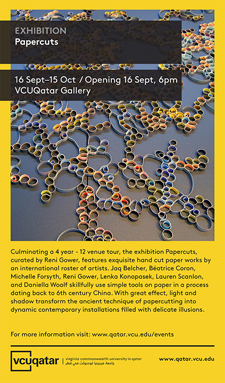 Invitation card for Papercuts
Invitation card for Papercuts
